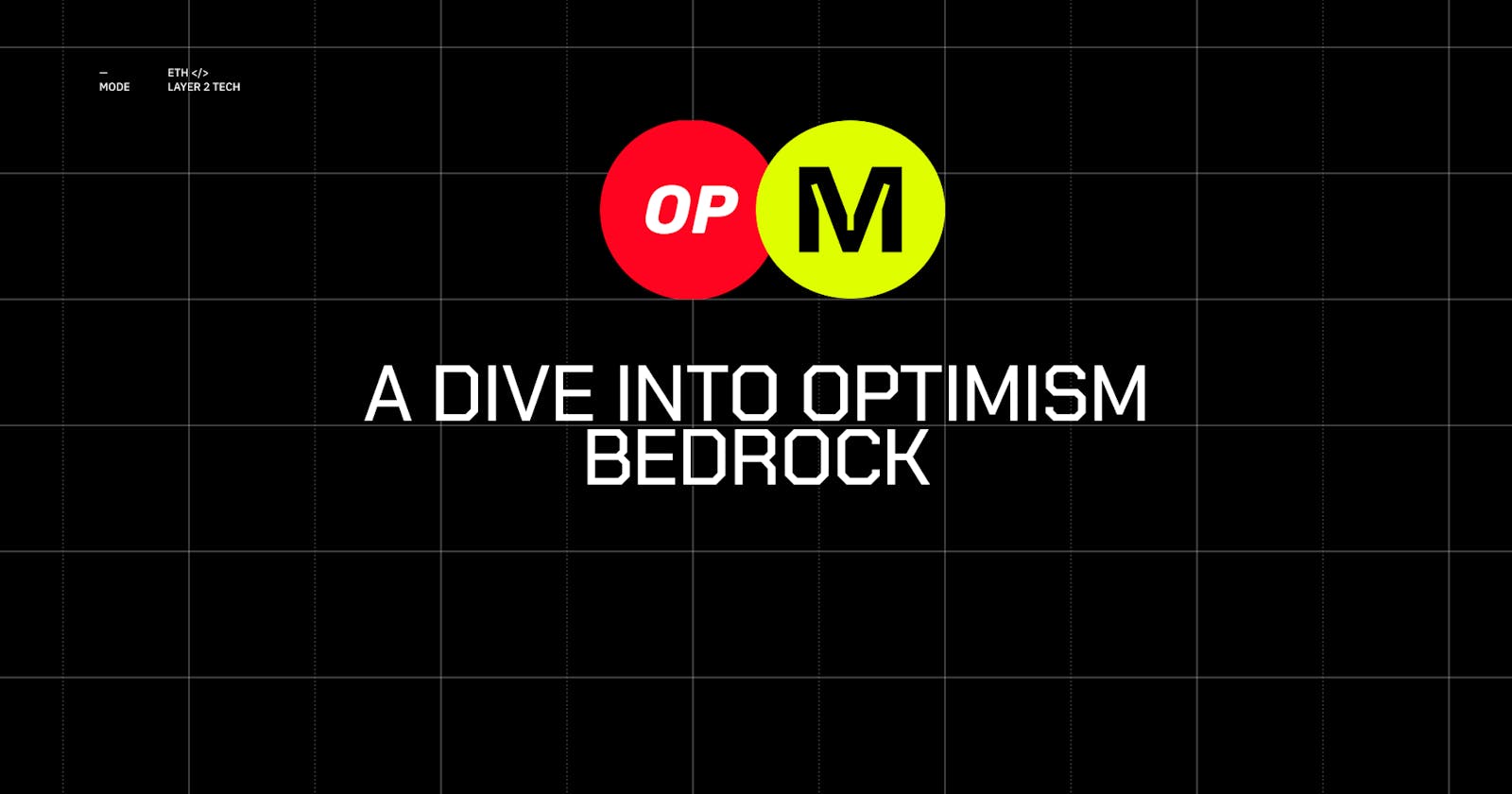Optimism is a blockchain ecosystem built for scaling Ethereum, it addresses Ethereum's high gas fees and slow processing times by processing transactions in batches off-chain with the help of an optimistic roll-up and then posting it back to Ethereum’s mainet for security.
In this article, we will be diving into Optimism bedrock, which is a major upgrade to the Optimism blockchain, we will also take a look at the Optimism superchain, the next major addition to the Optimism ecosystem after bedrock.
What is Optimism Bedrock?
Optimism bedrock is an upgrade to Optimism blockchain nodes, It acts as a critical "bedrock" for future development, aiming to improve efficiency, security, and flexibility. Bedrock’s features aim to make Optimism the cheapest, fastest, and most advanced rollup architecture.
Some of the features considered when it was built and designed are upgradeability and modularity. Upgrades no longer have to be monolithic but done seamlessly without disruption while allowing the addition of new features.
Bedrock’s modularity was built with developers in mind. Now they can pick and choose modules like Lego blocks to build customized Layer 2s on top of Optimism, Instead of one monolithic blockchain, you have smaller, specialized components working together seamlessly.
What are Optimism Bedrock Upgrades?
Some of the main changes that Bedrocks brings to the Optimism blockchain include;
Lower gas Fees
Bedrock achieves this by removing Layer 1(Ethereum blockchain) execution gas, reducing the data fees for Layer 1. This change reduces gas fees by an overall 10% compared to the protocol's previous version.
Faster deposit times
Bedrock reduces the time it takes to deposit transactions to 3 minutes by introducing block re-organization (Confirmation depth is reduced to 10-12 blocks for Layer 1). This is much faster compared to the previous version which takes about 10 minutes.
Ethereum Equivalence
Bedrock aims to be the most advanced rollup there is by incorporating all of Ethereum’s code, infrastructure, and design patterns into its architecture, making it as close as possible to Ethereum.
Examples of the Ethereum Equivalent features in Bedrock include;
A Separation between the execution and consensus layer.
Support for alternative and multiple node client implementations.
Support for the EIP-1559.
Support for a private mempool for Optimism sequencer to process pending transactions.
Improved Block production
Bedrock improves node performance and block production by removing one transaction per block model and now allows several transactions in a single block.
What is Optimism Superchain?
The Superchain is a network of layer 2 blockchains that share a common communication layer, bridging, and decentralized governance which is all built on the OP-Stack ( A toolkit for building Optimistic rollup-based layer 2 blockchains).
Instead of creating isolated scaling solutions, the Superchain aims to have a network of unified blockchains that aims to provide a scalable and secure web3 ecosystem while sharing the infrastructure and benefits of the Optimism rollup architecture.
How does the Superchain work?
Bedrock was the first major step toward achieving the goal of a unified network of chains on the OP-Stack. But, how does it work?
Horizontal Scalability: Unlike vertical scaling on a single chain, Superchain facilitates horizontal growth by adding new OP Chains as needed. This allows for the distribution of different applications and user loads across the network, significantly increasing transaction throughput and reducing congestion.
Shared Security: Security remains a critical aspect. The Superchain leverages a shared validator pool, where a set of chosen validators secure all OP Chains in the network. This means the security of each chain is backed by the combined power of the entire Superchain, even though smaller chains may have lower fees.
Communication Layer: To enable seamless communication and data exchange between OP Chains, a dedicated communication layer sits between them. This allows applications to easily interact with users and data across different chains, fostering a truly unified ecosystem.
Decentralized Governance: The Superchain is governed by the Optimism Collective, a decentralized organization made up of token holders and stakeholders. They vote on key decisions like adding new chains, upgrading the OP Stack, and allocating resources. This ensures the Superchain remains community-driven and evolves according to its users' needs.
Build with Mode
Mode Network is a superchain built on the OP-Stack, It was built to support and encourage a cooperative on-chain experience for builders and users. One way which mode empowers its community is through the Sequencer fee Sharing and the User Referral Fees, this initiative allows builders and users to grow as the network grows.

Conclusion
Optimism Bedrock has laid a solid foundation for the Optimism Superchain, a powerful vision for scalable and interoperable blockchain networks. By achieving significant reductions in gas fees, faster transaction times, and enhanced security, Bedrock has removed key barriers to widespread adoption.
Mode Network, built on the OP Stack, stands as a testament to the power of cooperation within the Superchain ecosystem. And, through innovative features like Sequencer Fee Sharing and User Referral Fees, Mode fosters an environment where builders and users can grow and thrive.
If you're ready to be a part of this, join the Mode community to learn more about how to turn your code into a thriving on-chain business.

